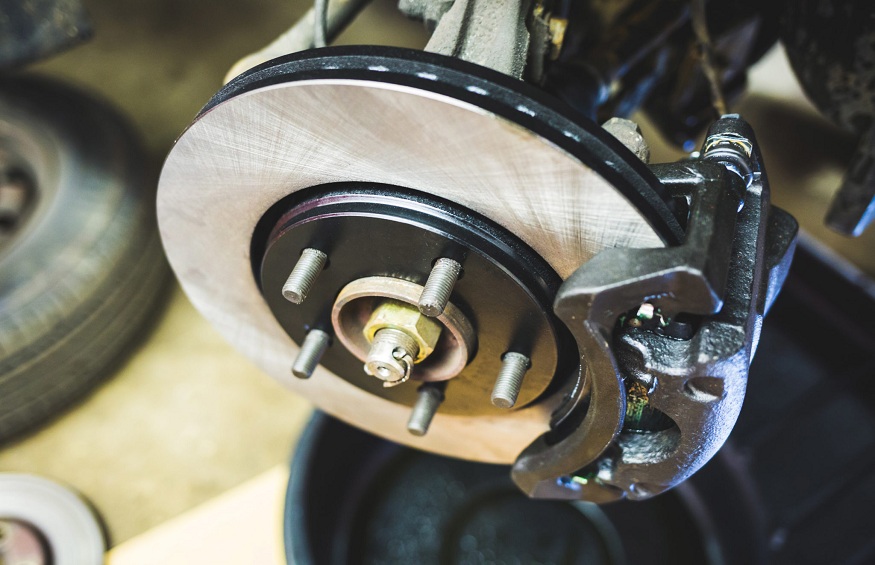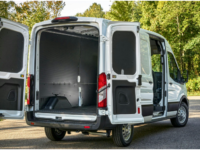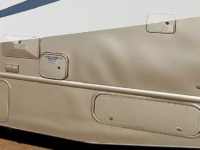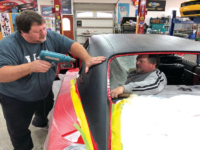Top 10 Most Common Braking Problems

Are your car brakes squealing? Maybe your vehicle is pulling to one side? Have you noticed a large puddle on your garage floor? All of these issues indicate a faulty brake system.
The brakes are essential for the safety of the driver and passengers. Their strength does not prevent the need for regular maintenance in particular because of their wear which develops due to the aging of the car which is inevitable.
How do the brakes work?
In most recent vehicles, the brakes use a disc or drum system. Brake discs are attached to the wheel hub and work with calipers, brake pads, and a hydraulic system to slow and stop the car.
When the brake pedal is depressed, the hydraulic system multiplies the pressure emitted on the pedal. The calipers then push the pads against the discs which slows the car down to finally stop it.
Drum brakes are based on the same logic. When the pedal is depressed, the hydraulic system pushes the brake shoes against the drum which is attached to the wheel hub. Again, this slows down the car, and stops it completely.
Modern brake systems are very reliable, but very complex, and some parts need to be maintained and replaced.
Top 10 Worries All Drivers Should Have About Their Brakes
Brake pads : Worn brake pads increase braking distance, and can create friction with the surface of the brake disc. If a wafer is cracked on the surface from overheating, then it will make noise when stopping. If the pads and rotor overheat, then the braking distance increases there too. If you hear a squealing regularly, then the brake discs and / or pads need to be replaced.
Brake discs: The surface of the brake disc should be flat to keep in contact with the pads. If the disc becomes deformed from heat, the pedal will vibrate and the vehicle will stop jerkily. If the brake disc overheats, its surface will turn blue or purple, and harden, which will prevent the pads from fully adhering. The car won’t stop, then, as fast as it should.
Leaks: A leak in the brake system is usually a hydraulic problem. If the pedal hits the floor of the car, it often means there is a leak. This indicates a loss of brake fluid and may cause the entire system to fail. Leaks must be repaired immediately. Symptoms of this problem are a puddle of brake fluid in the garage or a pedal that comes down too far.
Sticky calipers: The caliper and its brackets push the brake pads against the brake discs to stop the vehicle. Caliper pistons can get stuck in their cylinder causing the car to pull to one side when braking. Overheating and wear of discs and pads can affect acceleration due to sticky brakes. A sticky caliper is more than just a problem, it can be dangerous and should be repaired immediately. Sometimes the caliper bracket slides bind together, causing the same problems as a stuck caliper. The difference is that one pad will wear out too quickly instead of two.
Warped brake discs : Brake discs can warp if subjected to too much pressure. Driving in the mountains or towing can cause this kind of problem. Even the simple act of parking next to an automatic sprinkler can bring difficulty as cold water can warp the discs. As a result, the vehicle and the steering wheel may shake when you brake. Deformation of the brake discs can also increase the braking distance or cause the anti-lock brakes to engage prematurely.
Loss of brake efficiency: If it takes longer than usual to stop your car, it is probably due to brake fading * . This is often only temporary, but it can spread over time. For example, going down a mountain road heats the brakes, making the brake pads and discs less responsive. But when the brakes cool, they regain their original performance. However, over time the problem can become permanent. It is then time to change the brake pads and discs. Loss of brake performance is one of the first signs of overheating and complications with the brake discs and pads.
Smoky Brakes: While seeing smoke coming out of your brakes might sound nice, it’s actually very dangerous. This means the brake pads have burnt out or something has leaked on the brakes. If this happens, the pads will develop a glaze which can have serious performance implications. Leaking axle seals on the brakes will damage the rotors and pads.
The brake warning light: If the brake warning light is displayed on the instrument panel, it may be a sign of a serious problem. Often this indicates a fault in the hydraulic system. You must then have your vehicle inspected and repaired as quickly as possible. It is never safe to travel with the brake light on. This warning light also indicates whether the handbrake is activated in certain cars.
Faulty brake hose: A faulty brake hose can cause calipers to move unevenly. The vehicle then pulls to the side when the brakes are applied. If the brakes pull to one side, the vehicle should be inspected and repaired as soon as possible. Sometimes the fluid pressure to the caliper will not be released by the faulty hose and will hold the caliper in place.
Handbrake On: It might sound silly to say, but it happens more often than you might think. It is very easy to forget to release the handbrake, and this decreases the performance of the vehicle and damages the entire brake system. If the car seems to accelerate smoothly or if you hear a squealing noise, check that the handbrake is down. Cables can seize up while the handbrake is applied. It is then possible for the vehicle to remain stationary when it is desired to deactivate the handbrake subsequently.






